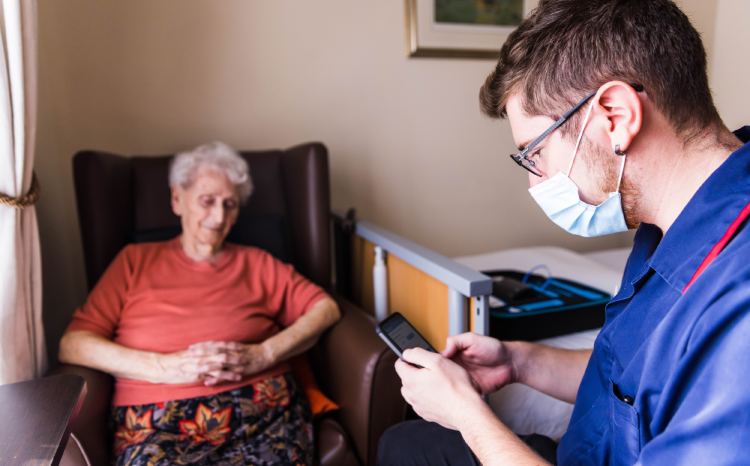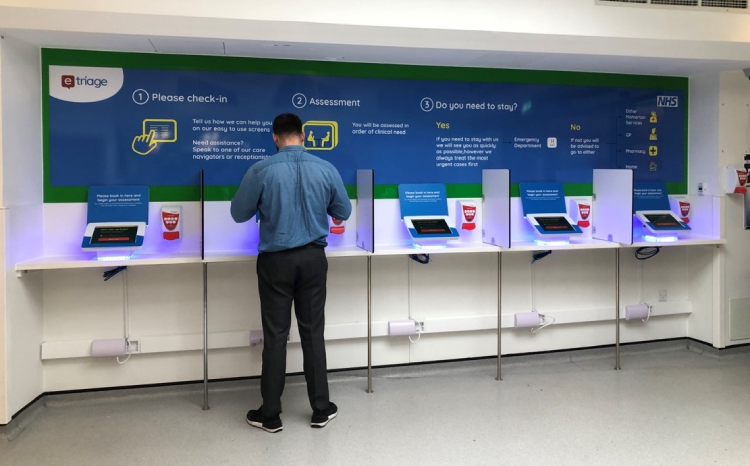Primary colours
- 13 January 2015

A look back at the inaugural EHI Primary Care newsletter could lead you to conclude that the more things change, the more they stay the same.
The first edition, published in February 2005, led with a story about GPs encouraging an overhaul of the Choose and Book e-booking service; a decade later, its successor is only now undergoing extended testing ahead of a planned go-live in spring this year.
The newsletter also carried an article about an award for a group of GPs installing a system to enable patient access to their records, an issue that is a focal point for the latest plan to reform the health service, NHS England’s ‘Five Year Forward View’, and the IT strategy meant to support it, the National Information Board’s ‘Personalised Health and Care 2020’.
However, it would be a mistake to think that little has changed between issue one and issue 500.
A hacking QoF
Just before EHI Primary Care launched, the government of the day brought in the Quality and Outcomes Framework. This did – and does – reward GP practices for improving the management of chronic conditions, carrying out prevention programmes, and offering additional services.
Dr Paul Cundy, a Wimbledon GP and the voice of IT for the British Medical Association’s GP committee, says the introduction of the QoF, alongside a new general medical services contract, made systems that could record quality outcome measures and clinical activity essential.
“Basically, for the first time ever, informatics became part of national contracts and we had a country-wide agreed clinical activity recording system,” he says.
Dr Shaun O’Hanlon, the chief medical officer at Emis, says the QOF and new GMS contract acted as “the final nail in coffin of non-paperless practice.” “There were still pockets of non-IT use… but these days, nobody [in primary care] uses paper notes.”
O’Hanlon says the agreements brought in some key elements that pushed forward the future of primary care computing to secure its success – namely, in giving GPs the right to choose their own systems to work with.
Fighting NPfIT
However, that right to choose was sorely tested by the National Programme for IT and its local service provider contracts, which aimed to move all GPs onto an LSP-approved solution.
Fiona Barr, who served as editor of EHI Primary Care for nearly seven years, experienced GPs’ anxieties over NPfIT first-hand and says the topic was never far from the pages of EHI Primary Care.
“There was a lot of concern that GPs would be forced to take systems from the LSPs, and there were a lot of stories about that at the time.”
Dr John Lockley, the clinical lead for informatics at Bedfordshire Clinical Commissioning Group, says the attitude of those driving the programme alienated GPs and did not produce systems that were fit for purpose.
“We had NPfIT which was very much dictatorial – they’d tell you what was the right thing for you to do, and the result of this was software that did not work very well.”
However, Cundy says the focus of the programme’s leaders were largely on other settings, allowing GPs to “keep our heads down and burrow away at what we already had on our agenda.”
O’Hanlon believes the LSPs severely underestimated the challenge of moving GPs off their existing systems, as well as the strong connections that had already been formed between practices and their software.
“By the time it came on the block and got up and running, GPs were essentially tied to their IT systems… you could walk into a GP practice and tell which system they were using because of how they worked.”
After years of battling, the GPs triumphed in 2007 with the establishment of the GP Systems of Choice framework, set up to reinforce GPs’ right to choose their own IT systems.
A new GPSoC contract was signed last April, with subsidiary suppliers joining the principals to provide GPs with more options for document management and other systems.
Disappearing suppliers
One side-effect of the battle over NPfIT and GP choice was a sizeable reduction in the number of principal system suppliers in primary care IT.
At one point in the early 2000s, Cundy recalls there being 17 suppliers offering 33 different systems. Now, Emis, TPP, INPS and Microtest are the four main suppliers left in the market.
Frank Hester, the chief executive of TPP, says the reduction in suppliers led to a similar drop in the level of innovation and liveliness within the primary care IT ecosystem. “With the LSP model, we saw a lot of suppliers leave the market – which I generally think was a mistake, because we lost a lot of vibrancy.”
One of the suppliers to drop out was iSoft, which was acquired by CSC before it decided in 2012 to withdraw its products from the NHS primary care market.
Lockley, who was chair of the now defunct iSoft national user group, says this was “a great shame, because it was an excellent system to use.”
Improved infrastructure
Paperless practices need good infrastructure. In 2006, a litany of problems with N3 connections at GP practices led EHI Primary Care to launch a Fair Deal on NHS Broadband campaign to improve the network so it could provide the speed of service GP practices needed.
Now, Hester describes N3 as a “fantastic bit of kit” that works consistently, rather than intermittently. “The network is real now, the N3 is real – it works, and it works every day, whereas back then it was scratchy with fall-outs.”
O’Hanlon says this reliability has helped to speed up a move to hosted services, which he says has gathered pace in recent years. “The advent of a secure, resilient network infrastructure has meant GPs are more comfortable with not having a server in the corner of their practice that could be pinched by a burglar.”
Mobile working has also come forward in leaps and bounds. “The introduction of smartphones and mobile technology has made a big difference in health, I think it’s changed what customers expect and demand,” Hester says.
And that, steadily, has applied to patients as well. “Things like booking an appointment… It’s now something you can do on a smartphone in three clicks, whereas you used to ring up the practice, be on the line for ages because it was engaged, then find out the appointment slots were all full,” Barr points out.
Joining up care
As primary care systems have matured and evolved, their scope has grown beyond the GP practice to encompass other care settings.
Both Emis and TPP have moved into community care, social care and other areas, and are running integrated care projects in Blackpool and Airedale to pick just two examples covered by EHI recently.
Hester says the move towards shared care records has been accelerated by Dame Fiona Caldicott and her review stating that information should be shared across care settings when it is in a patient’s best interests.
“Shared care was still a bit of a dirty word – it was still frowned upon by the establishment and we were a bit in the wilderness, whereas now with Caldicott2, it’s official that it’s better to share.”
Ric Thompson, the managing director of Docman, says greater integration is essential if the NHS is to meet the challenges presented by a growing number of elderly people with long-term conditions.
“The integration of health and social care and the goals associated with the Prime Minister’s Challenge fund can only be achieved if information about patients is available anytime, anywhere. This in itself can only be achieved if there is real interoperability across all systems and devices.”
On the other hand, sharing can be problematic, when it means releasing data to projects such as care.data; the ambitious programme to expand the Hospital Episode Statistics and link them to GP and other data sets, which caused so much upset last year.
GPs have been at the forefront of concerns about the project which, in an eerie echo of the row over the Summary Care Record during the NPfIT years, is being pushed out using an opt-out model, following a public information campaign widely condemned as inadequate.
A number of areas are now meant to be piloting care.data. Although a report from Dame Fiona herself has raised so many questions about it that it must be an open question whether it can continue.
Looking ahead
What, then, will the next ten years bring? Barr says the expansion of online patient access to GP records, pushed by health secretary Jeremy Hunt and reiterated PHaC 2020, will be a significant step forward.
Cundy agrees. But, perhaps bearing in mind his long experience of seeing similar projects come and go, he urges caution in rushing to meet arbitrary deadlines. “It’s critically important to get this right, and it’s much better to deploy things which are safe and can be used than deploy things by a certain date.”
He, along with many others, sees integration as a major issue, with a need to carry on joining up care and improving the links with acute hospitals.
“Primary care is pretty much sown up, but what we need is meaningful interoperability between primary care and secondary care. It’s not such a large hurdle to jump – we’re not talking about sharing records but exchanging data, and we’ve got structures in place that are eminently suitable.”
O’Hanlon says another future focus for integration will be in opening up information sharing between different GP IT systems.“It hasn’t been as good as it should have been, there have been some fairly good reasons, but that is an area that needs to improve.”
He believes the rise of wearable technologies may also prove fruitful for GPs, reducing their burden by enabling patients to record clinically relevant information themselves and potentially link it into their systems.
“They may be able to see what their blood pressure has been like over the last six months, and when it’s too high, it can tell them to visit their GP. “That won’t happen as quick as we might like it to happen, but it will happen progressively over the next few years.”




